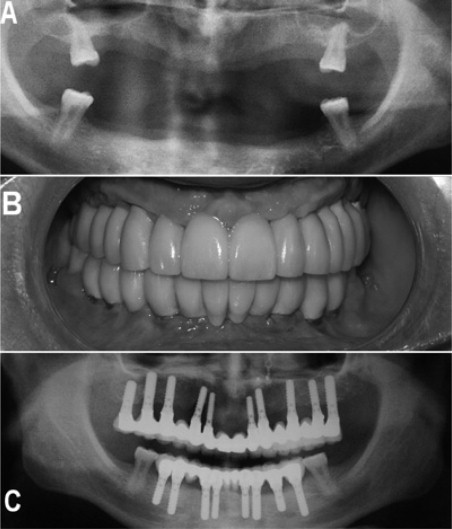Anodontia
A toothless smile in a baby is completely normal, but what if their teeth never come in? Anodontia, sometimes referred to as congenitally missing teeth, is a rare genetic condition that causes you to not have any teeth. This is different from having missing teeth due to an injury or dental problem.
Anodontia can affect both baby teeth and primary teeth.
In some cases, you may have partial anodontia, meaning you have some, but not all, of your teeth. Partial anodontia is usually categorized as one of the following, depending on how many teeth you have:
- Hypodontia. This term is used when one to six permanent teeth are missing.
- Oligodontia. This term is used when more than six (but not all) permanent teeth are missing.
Anodontia is an inherited genetic defect. The exact genes involved are unknown. However, Anodontia is usually associated with ectodermal dysplasia.
Ectodermal dysplasia is not one disorder but a group of closely related hereditary conditions that affect the hair, nails, skin, and sweat glands.
Symptoms of these hereditary conditions include:
- alopecia
- lack of sweat glands
- cleft lip or palate
- missing fingernails
In rare cases, anodontia occurs without ectodermal dysplasia. This is likely due to an unknown genetic mutation.
Anodontia is usually diagnosed if a baby doesn’t start developing teeth by the time they’re about 13 months old. Or it may be diagnosed if a child doesn’t start developing permanent teeth by age 10.
If either of these happens, your dentist may use X-rays to check for teeth in the gums that simply haven’t come in yet.
In some cases, children just develop teeth a little later than usual. If the X-ray doesn’t show any teeth, it’s likely anodontia.
There’s no way to stimulate the growth of congenitally missing teeth. If only a few teeth are missing, treatment might not be needed. However, there are several ways to add artificial teeth to improve appearance and make eating or speaking easier:
- Dentures. Dentures are removable replacements for missing teeth. They are usually the most effective treatment for complete anodontia.
- Dental bridges. Bridges are fixed (non-removable) replacements that bind artificial teeth to surrounding teeth to fill in spaces left by missing teeth. They work best if you’re only missing a few teeth.
- Dental implants. Implants add an artificial root in the jaw to hold a replacement tooth (or teeth) in place. Implants look and feel the most like natural teeth.
Besides making eating and speaking difficult, anodontia doesn’t cause many problems on its own. However, if it’s related to ectodermal dysplasia, you may have additional issues related to your hair, nails, skin, or sweat glands. Regardless of the cause, most causes of anodontia can be easily managed with dentures, dental bridges, or dental implants.
Complete maxillar edentulous
Maxillar anodontia is exceptional.
However, in some cases the remaining teeth can reduce the quality of the rehabilitation, and their extraction leads to a total edentulous maxilla.
This situation brings us back to the classical treatment of the complete edentulous maxilla. In order to do a fixed implant-borne prosthesis, the surgical phase is essential. The Le fort I osteotomy enables to fix the maxilla forward and downward in order to obtain a sagittal normal relationship between the maxilla and the mandible.
With this technique, the maxillary sinus can be grafted during the Le fort I. The bone is compressed and maintained with bone plates, creating a new sinus floor.
To guide the surgeon during the intervention, it is necessary to realise a pre-surgical set-up to establish the new position of the maxilla. Then, implants are inserted, according to the previous defined criteria. The prosthesis is a fixed bridge when we manage to control the aesthetic and phonetic criteria. In the opposite case, a resin-bonded bridge is screwed in the implant.
This fixed solution also provides a solution to other situations such as insufficient support of the upper lip, excessive prosthetic height, demand for a ‘diastem’ or shorter teeth, etc.
